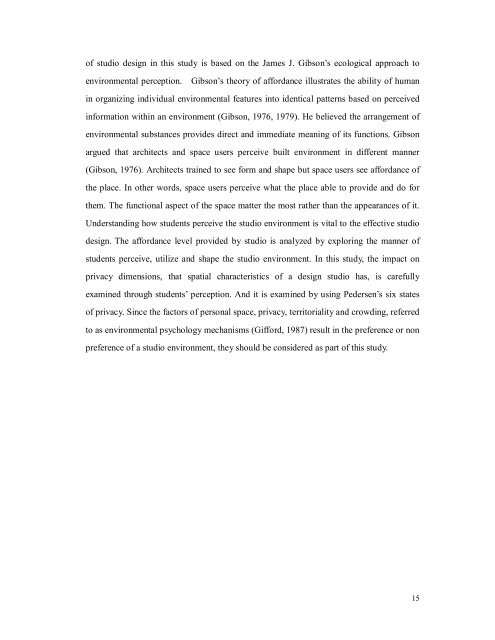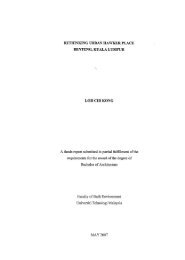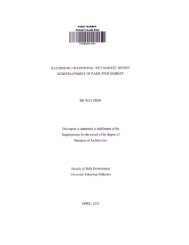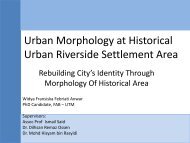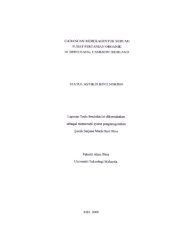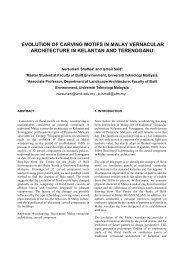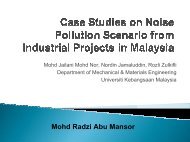RESEARCH PROPOSAL - Faculty of Built Environment - Universiti ...
RESEARCH PROPOSAL - Faculty of Built Environment - Universiti ...
RESEARCH PROPOSAL - Faculty of Built Environment - Universiti ...
You also want an ePaper? Increase the reach of your titles
YUMPU automatically turns print PDFs into web optimized ePapers that Google loves.
<strong>of</strong> studio design in this study is based on the James J. Gibson’s ecological approach toenvironmental perception.Gibson’s theory <strong>of</strong> affordance illustrates the ability <strong>of</strong> humanin organizing individual environmental features into identical patterns based on perceivedinformation within an environment (Gibson, 1976, 1979). He believed the arrangement <strong>of</strong>environmental substances provides direct and immediate meaning <strong>of</strong> its functions. Gibsonargued that architects and space users perceive built environment in different manner(Gibson, 1976). Architects trained to see form and shape but space users see affordance <strong>of</strong>the place. In other words, space users perceive what the place able to provide and do forthem. The functional aspect <strong>of</strong> the space matter the most rather than the appearances <strong>of</strong> it.Understanding how students perceive the studio environment is vital to the effective studiodesign. The affordance level provided by studio is analyzed by exploring the manner <strong>of</strong>students perceive, utilize and shape the studio environment. In this study, the impact onprivacy dimensions, that spatial characteristics <strong>of</strong> a design studio has, is carefullyexamined through students’ perception. And it is examined by using Pedersen’s six states<strong>of</strong> privacy. Since the factors <strong>of</strong> personal space, privacy, territoriality and crowding, referredto as environmental psychology mechanisms (Gifford, 1987) result in the preference or nonpreference <strong>of</strong> a studio environment, they should be considered as part <strong>of</strong> this study.15


